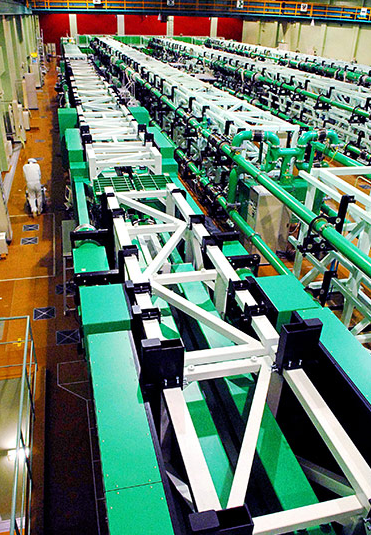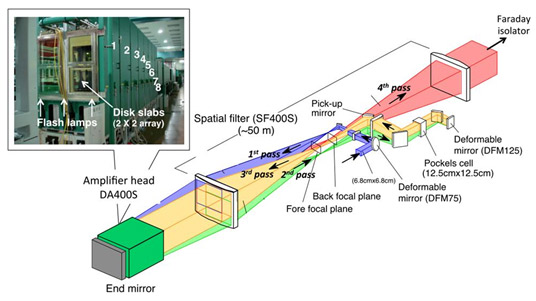A team of researchers at Japan’s Osaka University has just fired the world’s most powerful laser beam: a 2-petawatt or 2- quadrillion watt pulse that lasted just one picosecond (a trillionth of a second). If you want that in numbers, we are talking about 2,000,000,000,000 watts worth of power.
Designated the Laser for Fast Ignition Experiments (LFEX), the pulse was created by a 100m-long light cannon by applying energy to special glass using devices resembling ordinary fluorescent tubes, repeatedly amplifying the power of the beam. And the interesting part is that while the LFEX boasts immense power, it doesn’t actually require that much energy to operate.
To recap high school physics, power (in watts) is energy over time. And since the Osaka team is dealing with a picosecond time span, the device doesn’t need much energy to generate a massive amount of wattage. In fact, for this experiment, the LFEX only consumed a couple hundred joules, about as much energy as a microwave oven does over the course of two seconds. It’s able to generate so much power so quickly thanks to a series of glass “lamps” that amplified the laser as it passed through them.
“With heated competition in the world to improve the performance of lasers, our goal now is to increase our output to 10 petawatts,” said the institute’s Junji Kawanaka, an associate professor of electrical engineering at the university.
Based off these figures, the LFEX is 100-times more powerful than the previous record holder set by the Texas Petawatt at the University of Texas, Austin which achieved 2 petawatts for one picosecond. The new record-holder doesn’t have a video of its breakthrough, but thankfully, the University of Texas has one, so if you want to see the whole madness in action, watch it below.




